Boosting Productivity and Engagement: Strategies to Attract, Retain, and Develop Your Team
Learn how to unlock productivity & team engagement with proven strategies. Attract, retain & cultivate your dream team for success.
In today’s highly competitive business landscape, attracting, retaining, and developing a talented workforce is crucial for organisational success.
Recent findings from the ADAPT People Edge survey of 82 Heads of Human Resources highlight the significance of this challenge for Australian regional finance, digital, and IT leaders.
According to the survey, attracting and retaining talent is a top priority among these leaders, underscoring the pressing need for effective talent management strategies.
Organisations must improve employee experience, leadership development, and operational effectiveness to navigate the complex environment of skill shortages and rapid technological advancements.
The ADAPT People Edge survey provides unrivalled insights into CHROs’ pursuit of driving collaboration and peformance.
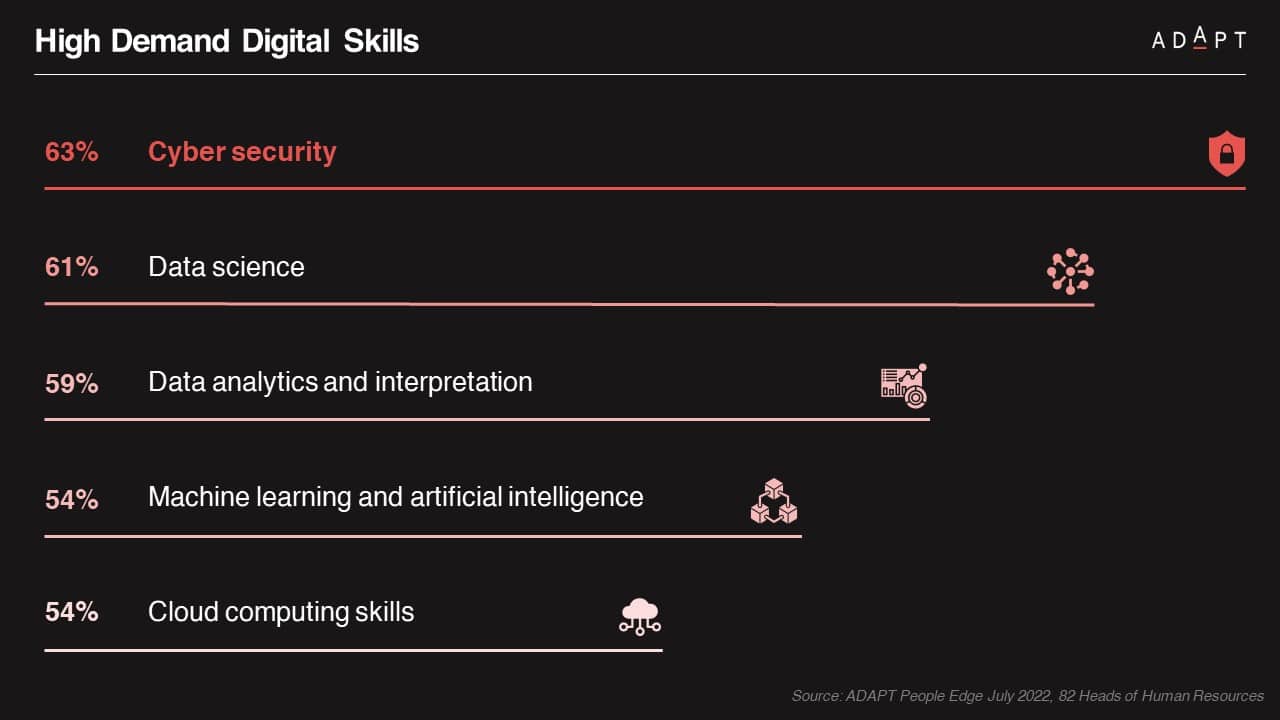
The statistics reveal the following priorities as identified by surveyed leaders:
- Cyber security expertise: 63% of respondents emphasise its importance.
- Data science capabilities: 61% recognise the need for these skills.
- Data analytics and interpretation: 59% consider them vital.
- Machine learning and artificial intelligence: 54% highlight their significance.
- Cloud computing skills: 54% recognise their value.
These statistics illustrate the growing demand for professionals in these fields.
By acquiring and cultivating these high-demand digital skills, organisations can drive innovation, improve operational efficiency, and gain a competitive edge.
The development of these skills will enable organisations to keep up with industry trends by prioritising their acquisition and development.
Through this, companies can successfully navigate the challenges of skill shortages and technological advancements while attracting and retaining top talent.
ADAPT develops specific action plans that address the challenges of developing a talented workforce head-on.
Australian organisations are engaged in an arms race for IT talent
Organisations were able to maintain services during COVID lockdowns in Australia due to the digitisation of operations, but it has led to a high demand for IT talent. As a result of COVID-induced border restrictions, immigration has been restricted, reducing the talent pool available.
This shortage has created an “arms race” for critical talent, forcing organisations to poach talent elsewhere. Smaller organisations face unique challenges, such as limited wage alternatives and competition from larger companies.
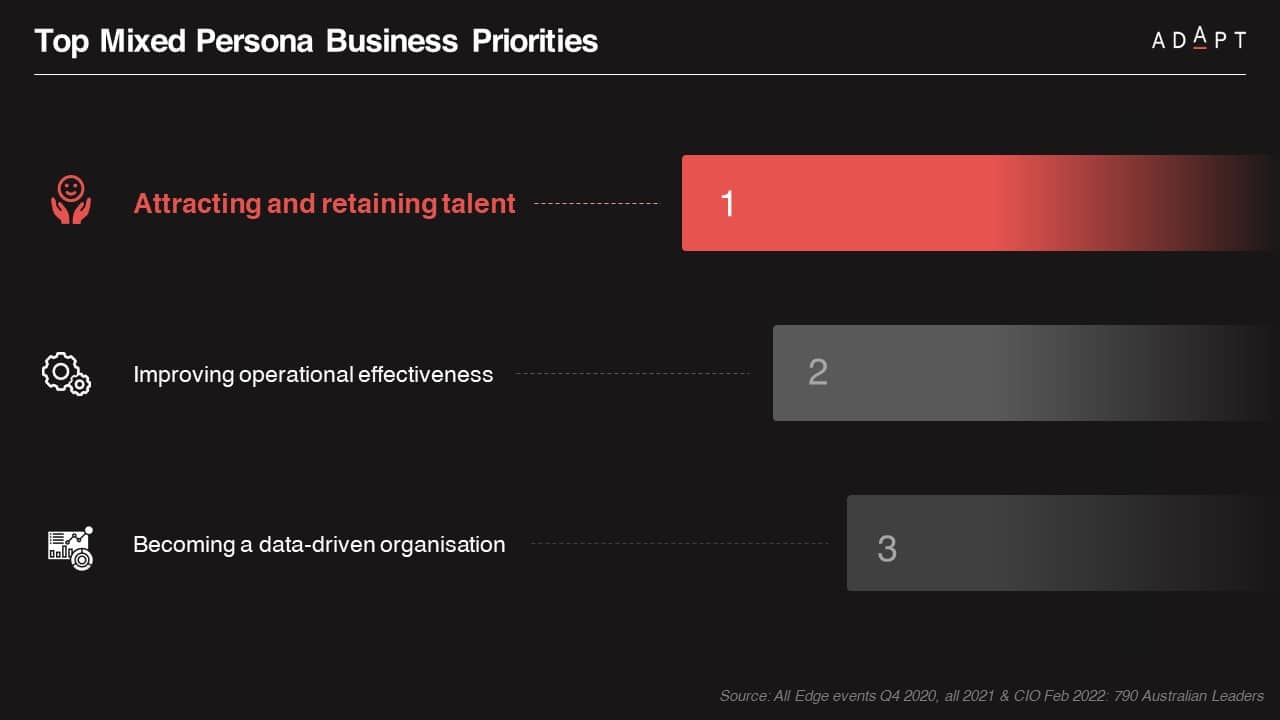
The pandemic’s pressures and rapid digital transformation have led to the “Great Resignation,” with employees questioning their work-life values.
Acquiring and retaining talent has resulted in delayed modernisation, lost productivity, and the need for streamlined hiring processes.
Staff retention is challenging in the public sector, as highly qualified individuals seek opportunities outside the industry due to cumbersome promotion processes. Collaboration with IT sector organisations is recommended to address these issues.
IT leaders use a mix of actions to recruit critical talent
Sell the organisation’s mission
To attract new employees, IT leaders emphasise the importance of demonstrating the company’s social mission.
Clearly defining the vision, outlining career paths, and demonstrating how new hires can contribute to business advancement is crucial.
Presenting the organisation as more than a paycheck is important to appeal to IT job applicants seeking additional benefits.
Engage on social platforms
Active engagement on social media platforms, particularly LinkedIn, allows IT leaders to highlight team members, projects, and personal stories.
Creating alumni groups helps maintain relationships and attract former employees.
Building a reputation for technology change and generating buzz through case studies at conferences and industry forums are effective strategies.
Arrange for lateral movement
Encourage employees from other departments to consider careers in IT to gain new perspectives and business insights. As well as improving communication between IT and the organisation, cross-hires contribute to change initiatives.
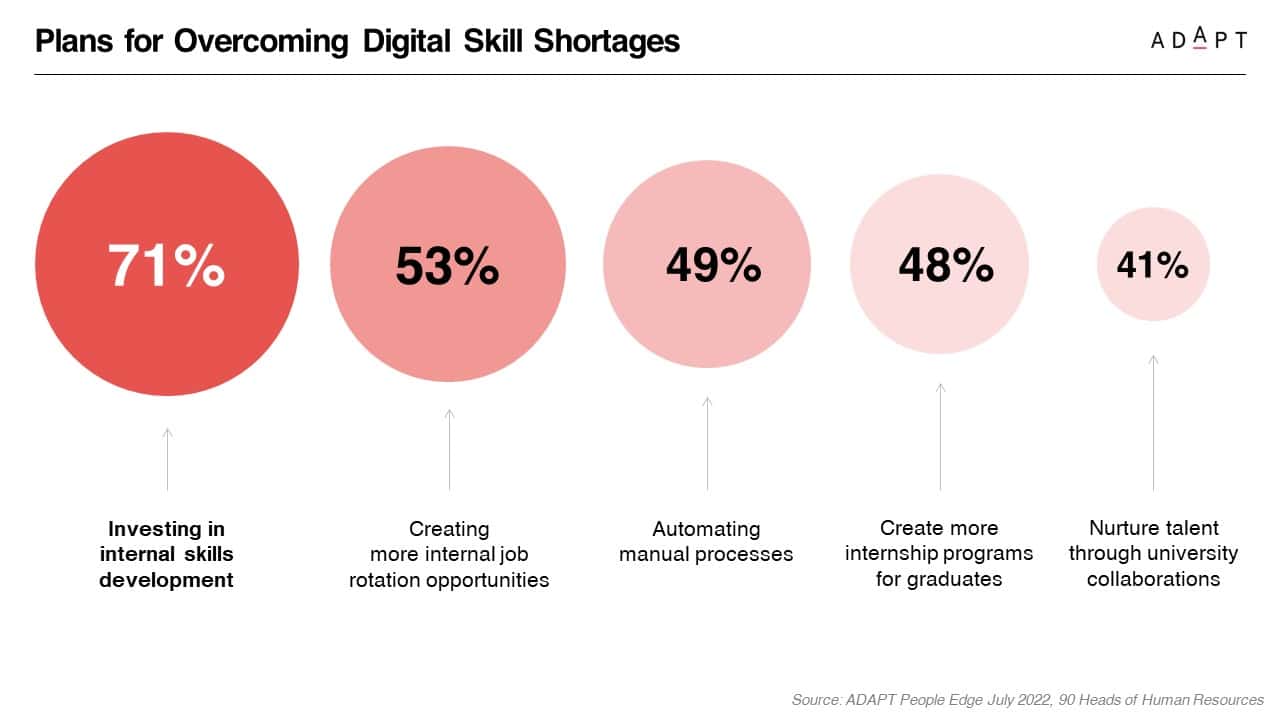
Collaborate with human resources and agencies
Collaboration with HR is vital, with executives valuing their support and involving them in management and leadership sessions.
Funding permanent hires in the HR team helps develop a pool of qualified talent for IT.
Partnering with external recruiting agencies ensures a better fit between the business culture and priorities.
However, IT staff should expand their view of desired skill sets, especially soft skills, since technical skills can be developed more efficiently.
Advocate diversity
Diversifying the IT workforce is encouraged by initiatives that reach underrepresented groups. Expanding networking beyond tech-focused forums helps attract a broader range of talent.
Sponsoring local hackathons and engaging with schools can attract potential employees.
Increasing diversity in the IT team brings a broader perspective to problem-solving.
Recruit directly from universities
Active engagement with colleges and universities is essential for recruiting graduates.
Non-IT disciplines often yield excellent recruits, as fresh graduates are eager to learn and see opportunities in the IT field.
Offering part-time, casual holiday work to third-year students creates familiarity and fosters return hires after graduation.
The following actions are the most recurring when it comes to retaining critical talent
Create chances for career development
- Provide individuals with opportunities to advance their careers and develop new skills. Consider staff members who have the potential for more senior roles.
- To promote career growth and offer new challenges to existing IT workers, CIOS should minimise dependence on external contractors for new projects.
Help staff chart their professional development
- Give individuals a fair chance and consider joint career progression.
- Create a workforce management strategy to assist Aussie IT professionals in mapping out their professional development.
- An ADAPT interviewee claimed that his company strongly emphasises development plans, which include an employee’s next position and the one they would hold in three years.
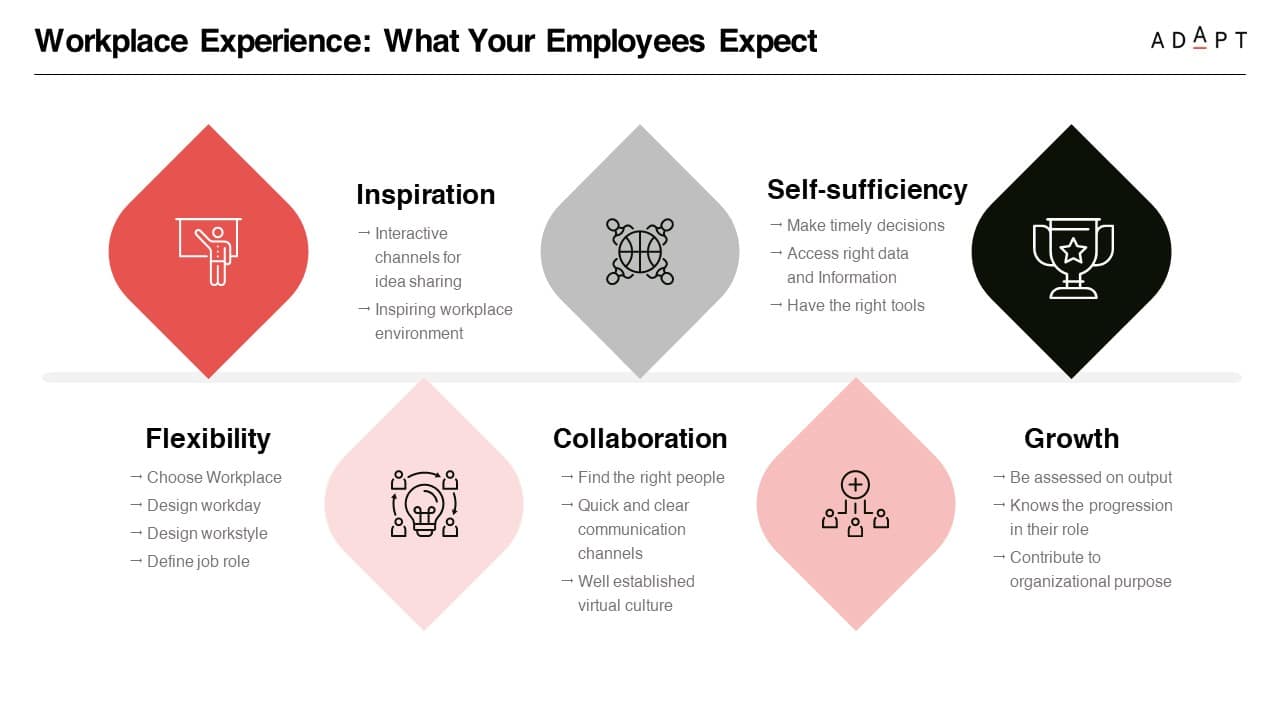
Give attention to each person as an individual and consider career advancement jointly.
Another suggests being provocative in these conversations to encourage more significant interaction between managers and team members.
Review skills matrix to prevent poaching
- Examine the IT department’s skill sets and the employment opportunities that are now available. This forewarns the CIO of any talent-poaching that may occur.
- One ADAPT interviewee takes aggressive measures to ensure these roles are paid competitively.
- A skills matrix technique also identifies the areas where an organisation depends on specific individual skill sets, allowing the CIO to train employees who could fill these roles if an employee leaves.
Engage staff through one-on-one discussions
- Promote open discussions with staff to facilitate feedback gathering and address burnout concerns before they escalate, potentially causing valuable employees to depart.
- Use regular Pulse surveys to gather feedback on business health, engagement, and satisfaction.
- Continue to enhance employees’ understanding of the significance of their work and contributions, thereby fostering greater engagement. Implement a 90-day planning cycle to demonstrate the impact of individual efforts on the company’s success.
- Develop IT’s Balanced Scorecard segment, aligned with SMART principles, to measure performance outcomes and their contribution to overall business goals.
Factor in tenure when considering staff needs
- Acknowledge that employees have varying career spans, and it is common to seek new opportunities at some point.
- When managing employees, consider the length of their service and plan for their replacement, perhaps through succession planning.
- Employee demographics significantly influence talent retention. Individuals in their early to mid-30s with expertise in development and business analytics may be particularly prone to exploring new opportunities.
- Factors like starting families or acquiring mortgages can impact their career choices, and additional financial incentives may be beneficial during this phase.
- In general, it is advised not to rely solely on monetary rewards to retain employees because it can cause discord within the IT department and reward dissatisfaction.
Empower employees working under the hybrid setup
In modern work, it is crucial to prioritise values alignment and collaboration over cultural fit.
This approach facilitates organisational transformation and drives success in the evolving work landscape. Dom Price, Chief Futurist at Atlassian, emphasises retiring traditional organisational charts in favour of values-based approaches.

Key Actions:
- Retire organisational charts: Prioritise values alignment over cultural fit to foster a positive employee experience. Encourage collaboration, challenge existing norms, and strive for excellence.
- Collaboration for streamlined workflow: Enable cross-functional and cross-team collaboration to remove friction and enhance workflow in a distributed workforce.
- Organisational transformation: Embrace a learning mindset, unlearn outdated practices, and prepare for future skills. Removing old systems and creating new cognitive pathways to learning leads to success.
Frank Ruscio, Chief Information Officer & Transformation Advisor at Ignition Advice, highlights the importance of effective policies and processes for remote and flexible work.
He emphasises the significance of streamlining employee onboarding and leveraging the Build, Measure, Learn loop to enhance the onboarding experience at scale.
Former Chief People & Sustainability Officer at Domain, Rosalind Tregurtha, shares insights on the challenges of a connected workplace and Domain Group’s adaptive strategies.
Despite the difficulties frontline workers faced, Domain quickly transitioned to remote work. Due to border closures, talent mobility was limited, affecting the availability of skilled workers.
Domain successfully implemented a hybrid work model, incorporating shorter online meetings and a flexible “Time Box” arrangement to support employee well-being.
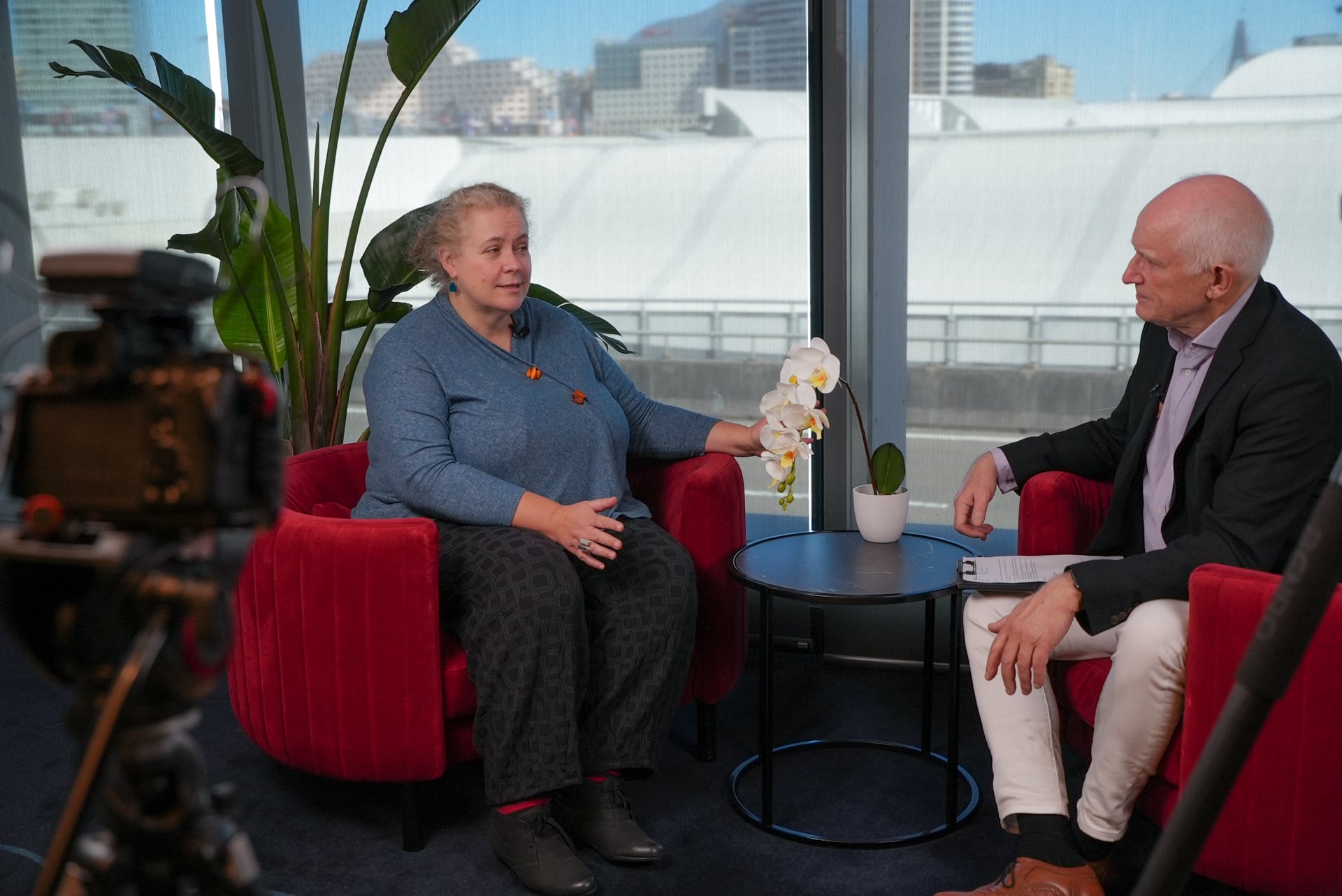
They also focused on improving prioritisation skills and work-life balance by limiting employees to five tasks rather than multiple tasks to provide more manageable workloads.
Furthermore, Domain Group uses the “Making Work Human” culture dashboard, which measures safety, agency, and belonging.
This recognises the influence of employee emotions and support levels on performance and engagement.
By embracing change, prioritising values alignment, and leveraging effective technology, organisations can foster a modern work environment that promotes collaboration, employee wellbeing, and long-term success.
Conclusion
Thriving in today’s highly competitive business landscape requires organisations to prioritise attracting, retaining, and developing talent.
The key to navigating skill shortages and adapting to rapid technological advancements is to enhance the employee experience, invest in leadership development, and optimise operational effectiveness.
Organisational success and sustainable growth rely on these key elements in today’s dynamic and challenging business environment.
ADAPT gathers Australia’s 120 top CHRO and Heads of People & Change driving collaboration and performance at People Edge.
























